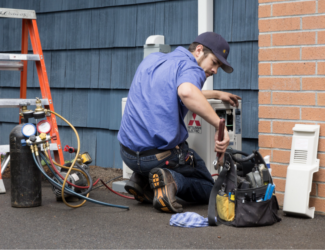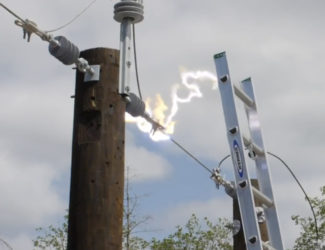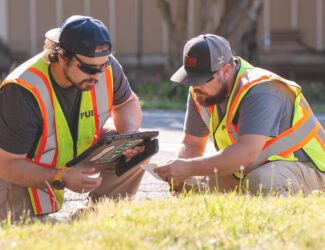
Public power in Snohomish County
Imagine life without electric light.
Those of us born in the Twentieth Century, who take space flight and laser surgery for granted, only get a taste of life without light bulbs on the rare occasion when the power goes out. We know that depending on oil lamps and candles for light has a unique charm for a little while but they soon can become a pain. They’re a fire hazard, they smell, they require constant vigilance, and they give off so little light you either need a number of them or you need to carefully bring one along whenever you walk around the house.
Of course, if you lived in the 1800s, oil lamps and candles were the normal way of life. But, based on your experience during outages, can you imagine how people living at that time must have dreamed for something better?
Let there be light bulbs
The age of oil lamps and candles ended on October 21, 1879, when Thomas Edison invented the electric-powered light bulb. The invention caused a great sensation. Everyone wanted one. The result was the birth of what has now become one of the nation’s biggest industries—the generation, transmission, and distribution of electrical energy.
The earliest developments of electric power were made by entrepreneurs out to make a buck by providing street lighting services for a city. Once the street lights were operating and citizens became excited by the new technology, they would then expand to provide electric service to interested businesses and a few residences. In Snohomish County, for example, the first electricity came in 1889 when Elhanan Blackman, the operator of a shingle mill and a sash and door factory in Snohomish, approached the city fathers with an idea to build an electric system for the town.
In those early days, the electric systems were isolated from one another. Like the system in Snohomish, small utilities soon popped up in Everett, Arlington, Edmonds, Stanwood, Granite Falls, and many other towns. No less than thirty different utility companies served the residents of Seattle alone. The isolation began to disappear in the 1890’s, as engineers developed methods to transmit power over longer distances. It became possible to link those small utilities together.
Combining small utilities into larger units provided several advantages, but the benefit that most caught the attention of investors was the opportunity to reduce service costs and make greater profits. The practice of buying and merging was so profitable it attracted some of the most wealthy entrepreneurs in the nation. Among them was the Stone & Webster Company.
The financial panic of 1893 had plunged many of the small utilities into bankruptcy and, while most continued to operate under court-appointed trustees, the companies were rundown, poorly maintained and unable to serve the needs of the growing population. They needed a complete reorganization.
Stone & Webster was happy to oblige. The properties of Seattle’s surviving lighting and rail services were consolidated under a single entity called the Seattle Electric Company. The enterprise expanded throughout the Puget Sound region—eventually merging 150 utilities in 19 Washington counties, including all of Snohomish County. The utility became known as Puget Sound Power & Light Company.
Public power in the Northwest
Meanwhile, a different philosophy was taking hold in the Northwest. There were some who felt electricity should not become a financial opportunity for a few. Because electricity had become an essential part of daily life, they felt the process of supplying it should be regarded as a public service, much like roads, schools, or parks. They felt electric companies should be owned by the public and should provide their product at-cost, without making a profit.
Public power arrived in the Puget Sound area in 1893 when the residents of Tacoma, tired of rates nine times higher than Seattle and street lights that were poorly maintained and not bright enough when they did work, voted to purchase Tacoma Light and Power Company. The city promptly reduced rates by 25 percent, reduced rates another 25 percent the next year, and reduced rates by 75 percent in 1903.
By that time the public power movement had reached Seattle. Also faced with high rates, a bond issue was passed in 1904 providing funds for a municipally owned generation system to supply power for street lights and to provide competition for the Seattle Electric Light Company. The idea worked. The prospect of inexpensive municipal power forced Seattle Electric Light to reduce its rates the following year from 20 cents a kilowatt-hour to only 12 cents. Nevertheless, by 1916, Seattle City Light had acquired some 42,000 customers from the company, or about 20 percent of the city’s load.
The plight of farmers
By the late 1920’s, holding companies were organized for no other purpose than to acquire utilities for the purpose of getting their security business. The Electric Bond and Share Company, known as EBASCO, was the largest, with control of 15 percent of the nation’s output of electricity, including 53 percent of the electric load in the Pacific Northwest. In order to enhance the companies’ return on investment, electricity users ended up paying high charges for nominal services.
A typical example was the customer living in Clark County, who was served by Northwestern Electric Co., which was owned by American Power and Light Co., which was owned by EBASCO. It so happened that Northwestern Electric leased its lines and transformers from Pacific Power and Light Co., which also was owned by American Power and Light. Consequently, the electric ratepayer in Clark County not only paid a rate high enough to cover the “sweetheart” leasing costs Northwestern paid to its sibling company, but also paid a rate that was high enough to earn Northwestern a profit, to earn a profit on American Power and Light stock, and to earn a profit on EBASCO stock. It was a profit, on a profit, for a profit.
Hardest hit by this kind of arrangement were the farmers. By 1920, most of the cities and towns in Washington had enjoyed electricity for at least a decade. But that wasn’t the case in rural areas. Utilities assessed charges based on population densities and the distance from the generator. A utility that charged 5.5 cents for a kilowatt-hour consumed in Seattle would charge 12 cents for a kilowatt-hour used near Chehalis. For rural areas, that meant electricity was just too expensive to have.
Of course, if a farmer really wanted electricity, he could get it. But, the price was extraordinarily high. To get service, the farmer would have to purchase the poles, set the poles, and string the line. Then, before the line was energized, the farmer had to deed all the equipment to the utility and grant the company a right of way to the property. The utility would add those improvements to its rate base and, because rates were based on the value of the utility’s property (including the farmer’s poles and line), would charge the farmer higher rates in order to assure a return on the investment, which the farmer had actually made on behalf of the utility. In other words, a farmer ended up paying several times over for the cost of a line extension he built.
By the late 1920s, farmers were tired of the abuses and failures of the utility companies. They wanted to get rid of the old kerosene or coal oil lamps. They wanted to have the benefits of electricity that their city neighbors enjoyed without having to meet demands they considered to be outrageous.
Conditions were ripe for a revolt.
The Legislative battle begins
The municipal utilities that were organized in Tacoma and Seattle in the early 1900s provided their customers with better service and lower cost power than did the privately owned utilities nearby. Faced with the prospect that their customers would notice the comparison and also want to form publicly owned utilities, the investor-owned utilities went to work to put the brakes on the public power movement. They not only tried to make the comparison more favorable by charging less for power in certain areas, they worked to get laws passed that would stop the spread of public power.
The presidents of the state’s two largest privately owned utilities were regular fixtures in Olympia and had considerable influence on the state Legislature. First they tried to make it virtually impossible for municipal systems to condemn the property of private utilities. The legislature passed bills in 1915 and again in 1921 and ‘22 to place referendums before the voters that would make such restrictions. The voters rejected the proposal each time.
Next, the legislative battle lines were formed around the idea that a municipal utility could sell power to utilities located outside its city limits. The idea was proposed in 1923 by a first-term state legislator from Tacoma named Homer T. Bone, who supported the concept of publicly owned power systems. The bill started one of the most bitter fights the legislature had ever witnessed.
The private utility interests flooded the legislature with printed propaganda and lobbyists and made sure the bill was defeated. Then, to counter the Bone Bill, the House Speaker proposed a law that would levy punitive taxes against any municipal light system that sold power outside its city limits. The state Legislature passed a bill to place such a referendum before state voters in the general election of 1924.
Homer T. Bone didn’t give up. An ambitious, self-taught attorney and an eloquent orator, Bone also decided to take the issue to the voters, collected the necessary signatures, and got his counterproposal on the same ballot in the form of an initiative. The resulting campaign was hard fought. Both sides distributed thousands of pieces of literature and engaged the services of every well-known advocate they could find. Bone later charged that the private utilities spent the unheard-of sum of a million dollars to defeat his initiative and get the referendum passed.
In the end, the voters rejected both measures. Yet the battle between the private power interests and the public power interests was hardly over.
Voters face the issue of Public Power
The bitter election of 1924 intensified the debate between those who saw electricity as a financial opportunity and those who saw it as a public service. The climactic battle between the two interests came only a few years later, resulting in the law that allowed the creation of utilities such as Snohomish County PUD.
That effort started during the 1924 campaign, when Homer T. Bone stood before the state convention of the Washington State Grange to solicit their support for his measure. He not only got that support, he incensed the delegates to such a degree that public power became one of the organization’s primary causes. With the help of Bone, the Grange drafted a proposed law in 1928 that would give citizens in rural areas the same right to form publicly owned electric systems that was enjoyed by city residents.
They had in mind one of the strongest public power laws in the nation. Their proposal called for a municipal corporation that would provide utility service without profit, that would be operated by a board of elected citizens, that would have the power to issue revenue bonds, and that could use the right of eminent domain to take over the properties of a private power company if that company refused to sell.
Fearful of the domination private power interests had over the state legislature, the Grange submitted their bill through the initiative process. Although the group needed only 40,000 signatures to get the proposal on the ballot, they collected over 60,000 in two months. Still, the legislators refused to pass the bill in the 1929 session. So, under procedures outlined in the State Constitution, the bill was placed on the ballot for the general election of 1930—listed as State Initiative No. 1.
Like the public power measure in 1924, it was a hard fought campaign. Private power companies called it the most dangerous tax measure ever submitted to the voters of the state. The president of one utility company warned voters that the bill was “filled with dynamite” and was a “new departure along the line of political ownership of business.” Homer T. Bone, on the other hand, told voters that if the private utilities beat this bill they “will have the country people by the throat so far as electric light and power rates are concerned.”
On November 4, 1930, a total of 152,487 people voted to approve the Grange Power Bill while 139,901 voted against the bill. Although many voters served by private power opposed the measure, it was approved by a 54 percent majority and by 28 of the state’s 39 counties.
The Grange Power Bill only created laws that enabled county residents to form public utility districts, however. The hardest part was yet to come. Next came the ominous task of actually forming the publicly owned utilities and getting them into the power business.
The fight in Snohomish County
With the passage of the Grange Power Bill, rural residents throughout the state began to process of organizing public utility districts. The first were considered in 1932. As voters swept Franklin D. Roosevelt into the White House and Homer T. Bone into the U.S. Senate, residents in Grant County and in Spokane County also voted to create public utility districts in their communities. The story was different in Snohomish County, however.
Puget Sound Power & Light had been a leader among investor-owned utilities in getting electricity to rural areas. The company had organized a farm electrification department in 1924. Yet, it still had the problem of multiple layers of ownership. All the stock of Puget Power was owned by Engineers Public Service Company, which was owned by Stone & Webster.
Public power advocates managed to get a measure on the 1932 ballot to create a public utility district in Snohomish County, but the opposition was aggressive. The issue for those against to the idea was taxes and the condemnation powers the law would give PUD commissioners. An organization that called itself the Snohomish County Tax Reduction Association called the effort “simply another raid on tax-spenders and visionaries seeking public payroll jobs or personal gain.” The mayors of ten Snohomish County communities expressed concern that the law would allow the confiscation of property and cause them to lose the tax revenue they received from the private utility.
In the end, the measure was defeated by a two to one margin.
Four years later the public power advocates tried again—and, once again, opponents brought up the tax and condemnation issues. The Everett Herald was against the idea, as was nearly every mayor in the county. And, once more, proponents argued that a publicly owned utility would give citizens an active voice in policies affecting service and operations, that rates would be lower because it would not be driven by the need to make a profit, and that the financial benefits of the utility would stay in the community rather than go to stockholders throughout the country. But this time there was another reason to vote in favor of the measure.
The federal government had started construction of the Grand Coulee Dam in Eastern Washington and Bonneville Dam east of Portland. The way the laws were written, publicly owned utilities had preference to the electricity that would be generated by those two huge facilities. The idea of getting some of that power was just too enticing to Snohomish County voters. They created the Snohomish County Public Utility District by a vote of 13,850 in favor and 10,463 against.
It took awhile for the utility to actually get into the electricity business. There was a challenge to the bonding authority of public utility districts that had to be resolved by the U.S. Supreme Court; there was a legal challenge to the preference rights of the utilities; there was World War II; there was opposition from the business community; there were difficulties getting the money raised to buy the existing electric system; and there were years of negotiating with Puget Sound Power & Light to reach the right price and conditions. Finally the deal was completed for $16 million.
On September 1, 1949, the dream of publicly owned power finally came to Snohomish County and Camano Island. The PUD went into the business of selling electricity.







